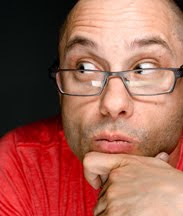Revelations from today :
-A grayscaled photo can be manually re-colorized with a single color layer, making use of 'select -- color range.' This means that, if you're pulling color from a photo into your grayscaled painting, the values should be in a similar (if not the exact same) range. I often tried doing this with weak-valued paintings of mine, and wondered why I wasn't getting the desired punch. Dur!
-We read pictures like we read letters. No one prints letters light on a light background. The pattern is too vague. You don't want to make people struggle to see things. More contrast = better read.
-Shae told me about the joys of value grouping, using the cutout filter, and how to make alterations so as not to be a slave to what's in the photo.
-Albert told me to put the background color into my shadows (in this case green).
-Finally, AJ shared some great high frequency noise brushes! I showcased the ones I'm making tool presets from. Thanks, man!
-A grayscaled photo can be manually re-colorized with a single color layer, making use of 'select -- color range.' This means that, if you're pulling color from a photo into your grayscaled painting, the values should be in a similar (if not the exact same) range. I often tried doing this with weak-valued paintings of mine, and wondered why I wasn't getting the desired punch. Dur!
-We read pictures like we read letters. No one prints letters light on a light background. The pattern is too vague. You don't want to make people struggle to see things. More contrast = better read.
-Shae told me about the joys of value grouping, using the cutout filter, and how to make alterations so as not to be a slave to what's in the photo.
-Albert told me to put the background color into my shadows (in this case green).
-Finally, AJ shared some great high frequency noise brushes! I showcased the ones I'm making tool presets from. Thanks, man!


2 comments:
Hey Paul. Can you elaborate on the first paragraph here? More specifically - how are you using the select > color range tool to aid you here in picking colors?
Sincerely,
A very horny robot
Hmmm.... so, it's for bleeding and such, so when you drop your color in you aren't coloring outside of your value groups (?) This has to do with the fact that individual colors carry specific values with them that don't translate into other values. An interesting point about color: Different hues have different values at their respective maximum chroma range. Yellow, for example has its most saturated effect around a value of 2. Whereas purple is most saturated around 7 or 8. In the Photoshop color picker this is always the top right corner. But the value of that top right corner fluctuates as you move the hue around.
I think I just answered my own question. I thought perhaps this was being used to pick colors out of the source and I was trying to figure out how that would be helpful.
Anyways.... I'm eating ur brainz and gettin ur knowwlleedggeeeee!
Post a Comment